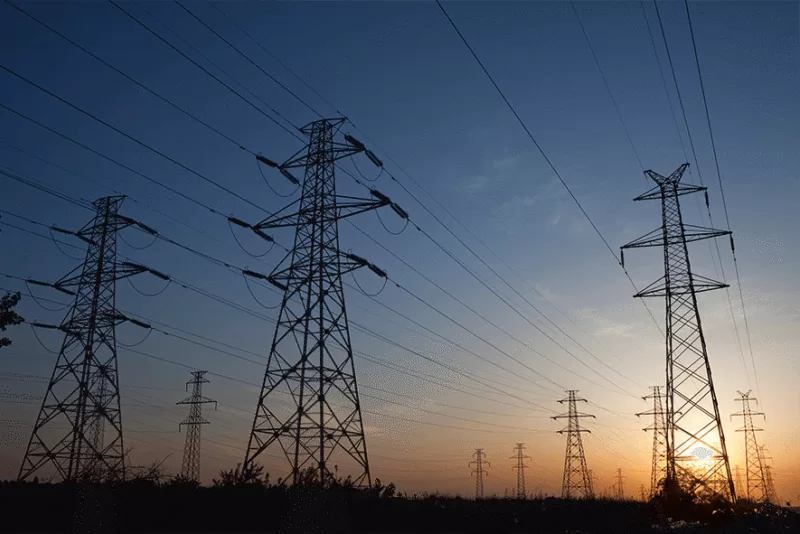We recently hosted a webinar on power vulnerability, and the changing landscape of the European power sector. The panel comprised four experienced commentators which created a thought-provoking discussion given recent energy market volatility.
There are three areas I would like to highlight in this blog, which are especially pertinent.
Power price volatility
A multitude of factors have contributed to a perfect storm of record high energy prices. Most prominently being current geopolitics and the subsequent supply of gas to Europe.
The spike in gas prices has meant the fuel has become uncompetitive compared to coal for power generation, causing a rise in the price of EU emission allowances. This has continued their long-term trajectory following the European Commission’s plan to reduce the number of allowances in the market as part of its net zero plans.
Along with large scale decommissioning of major baseload power production capacity in Germany and weak renewable energy production throughout Europe, there is unparalleled uncertainty in the short-medium term.
As the cost of energy becomes a much larger part of digital infrastructure OPEX, we are seeing a growing demand from customers to shift data loads from high price markets to cheaper locations, which for countries which are experiencing capacity shortages, provides a viable alternative at a low cost and low carbon solution. You can read more on this in my previous blog here.
Power Security
Last month Annalena Baerbock, Federal Minister for Foreign Affairs and leader of the Green Party, pledged that Germany would stop importing oil from Russia by the end of 2022, and wean itself off Russian natural gas as soon as possible.
The Federal Government have also committed to a series of ambitious renewable targets, including the phasing out of coal by 2030, eight years earlier than the target set by the previous government and a target of 80% of electricity to be from renewable sources, which is nearly double the share supplied in 2021 (41%).
To achieve this ambition, new firm capacity is required to supplement the grid on the less productive (windy or sunny) days. Until recently, this would have been made up of traditional gas fired thermal capacity, which emits 50-60% less carbon dioxide when compared to a new coal facility.
However, if implemented this would naturally lead to a stronger demand for gas which will put further demand on supplies. We are therefore seeing a growing call to build onshore and floating liquefied natural gas terminals (Germany currently has none) as the country looks to diversify its fossil-fuel imports.
There is clearly no easy answer, but what is clear is that the issue of power security will only become more prevalent.
24/7 Matching
Historically, governmental market intervention across Europe has sheltered customers from energy market volatility. However, with significant debt piles accrued through large-scale government support programmes during the pandemic and facing an unprecedented cost-of-living crisis, European governments have had little option but to pass these price rises on to the consumer.
As consumers are more exposed to the energy market, this provides an opportunity to create a system where the end user is involved and incentivised in the process to move away from fossil fuels.
And we are beginning to see technological innovation coming to the fore to enable this change. There has been a growing move towards 24/7 matching, which matches energy consumption with carbon green energy generation on an hourly basis, from resources on the same local grid, which shifts from offsetting energy emissions to tie location tracked energy procurement, thus maximising real-time local impact.
“Suddenly there’s a lot of things that are incentives, flexibility is incentivised because you’re better off at using electricity at a time when the grid is cleaner, because you won’t have to buy certificates on top of that optimal setting of projects” Olivier Corradi, CEO electricyMAP said.
To date, this technology has mainly been used by major hyperscalers but several new initiatives have the potential to be rolled out to the general market. Last month a pilot-scheme was launched, led by a focused start-up Granular and including European power market Nord Pool, Elexon, Energy System Catapult and Unicorn, for hourly renewable energy certificates in the UK.
As this technology develops this has the potential to allow consumers who are increasingly concerned over their carbon footprint, to create demand to move workloads to truly renewable locations, rather than those based in grids with only some capacity.
Conclusion
Understandably, concern over the impact of increasing power prices and security of supply have been central topics of discussion during Data Centre World, Frankfurt in May.
But there is a real sense of determination to overcome these challenges, which will likely increase the speed to adopt and implement new practices.
And the current climate only reinforces our mission at Bulk, to bring sustainable solutions to a global audience.
For countries like Germany which are starting to encounter capacity shortages, Bulk provides a low cost and low carbon solution for data center workloads, and with our DK01 Denmark site only 100km away by air, offer low latency and scalable solutions.

 Back to Newsroom
Back to Newsroom